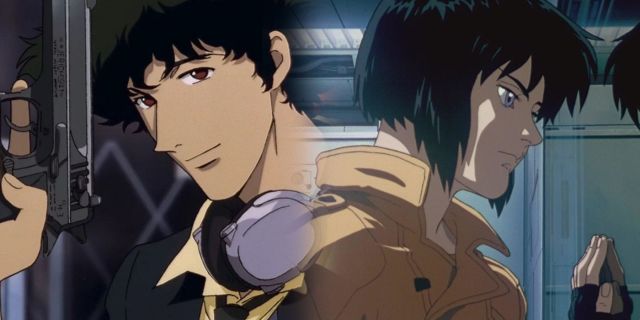Highlights
- Cowboy Bebop and Ghost in the Shell are iconic anime series that showcase futuristic settings, but what makes them stand out is their attention to the things that don’t change in the future.
- Cowboy Bebop’s romanticized approach to its characters and its deceptively contemporary society add depth and value to its sci-fi narrative.
- Ghost in the Shell creates a believable future by subtly integrating futuristic elements and exploring the merging of man and machine, predicting the impact of the internet on society.
Cowboy Bebop and Ghost in the Shell are two of the biggest science fiction anime of all time, though the former has been primarily cherished as a neo-noir Western rather than just “sci-fi.” While these two shows have been lauded for their rich themes and mesmerizing aesthetics, there’s an underrated quality to the futures they depict; the things that don’t change.
While Ghost in the Shell has seen numerous iterations, with the newest ones dating as recently as 2022, both it and Bebop’s singular season gained their prominence during the late 90s. Mamoru Oshii’s Ghost in the Shell from 1995 is still the most iconic worldwide, and Shinichiro Watanabe would direct Bebop three years later in the post-Evangelion boom of original TV animation.
RELATED: Special Exhibition Opens for Cowboy Bebop 25th Anniversary
The Romanticism of Cowboy Bebop
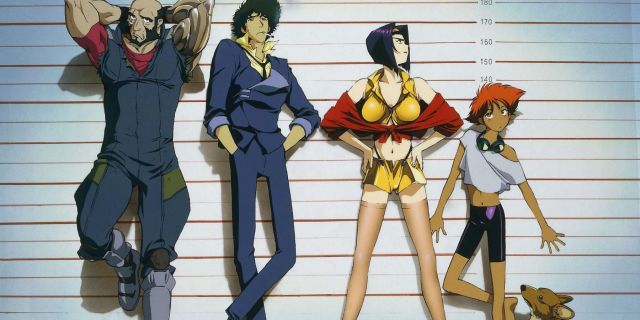
Cowboy Bebop takes place in 2071 after humanity has left Earth to create colonies throughout the solar system. The funny thing is, depending on how one is initially exposed to the show’s iconography, one could be forgiven for being blindsided by the existence of space travel at all. When Spike and the gang are traveling on foot, there’s rarely anything to distinguish the setting from any normal city on Earth.
Thanks to advanced terraforming technology and weather control systems, traditionally uninhabitable planets house bustling cities that all just sorta look like New York or Tokyo in the 90s. This includes the guns, which never look like they’re from the future, but rather a best-of collection of Hollywood action movie props. Bebop has some of the best gun porn in the medium, after all; all gorgeously illustrated and lovingly brought to life through bombastic sound design.
Considering the show’s commitment to depicting such a deceptively contemporary society, it’s fun to ponder whether the show was always meant to be science fiction. Bebop was animated at Sunrise, the studio most famously known for mecha series like Mobile Suit Gundam. In early development, Watanabe was told he could do whatever he wanted so long as there were spaceships that Bandai could turn into toys.
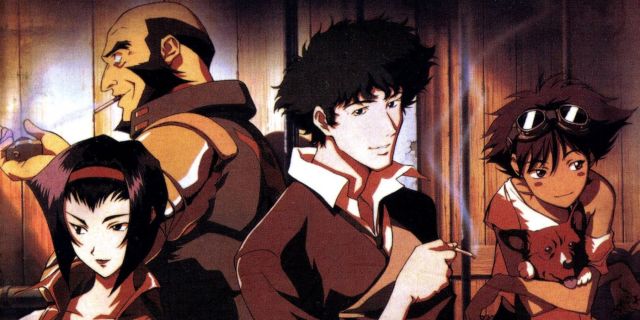
Apart from being the greatest blank check any director could ask for, it almost paints the science fiction trappings as an afterthought. Perhaps the story could have just been set in the modern day were it not for Bandai’s involvement. That said, even if this were remotely true, it wouldn’t matter all that much, because Bebop’s arguably anachronistic approach only heightens its worth as a sci-fi story.
Thematically, it’s a perfect observation of the romanticism of days gone fading into pastiche. It’s reflected in the main characters especially. The cowboy, the femme fatale, the ex-cop – all of them are as striking, sexy, and romanticized as possible. But then, the story slowly peels back the already chipped paint to reveal that they’re just human. They’re pretty bad at living, at that, were it not obvious from their shaky track record of bounty hunting.
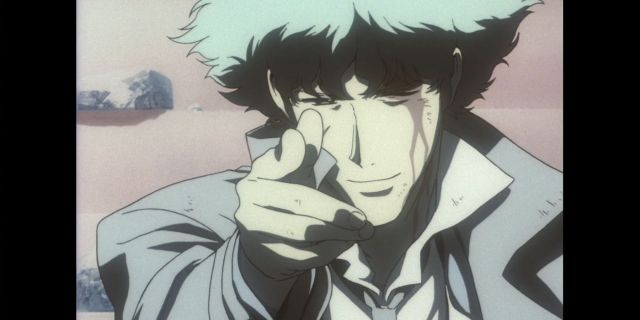
Spike’s iconic speech from the finale brings it home. His left eye sees the past, while his right eye sees the present. Notice that he doesn’t say the “future.” That’s because nobody in Bebop has the time to look to the future. They’re all caught up in the past. It seems like a never-ending episodic adventure, right up until it does end – all because the past finally catches up with Spike and especially because he turns to meet it.
The Familiar Future of Ghost in the Shell
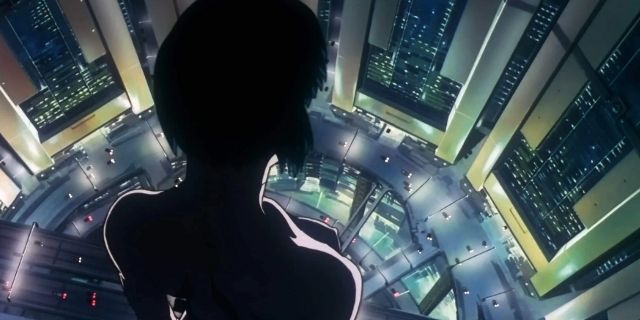
The distinct flavors of science fiction seen in these two stories derive heavily from the styles of the time in which they were created. While quite different from each other, they are joined by being classics from the same era and sharing a similar attention to detail that firmly roots the viewer within the setting. Ghost in the Shell has its share of gun porn as well, and Mitsuo Iso’s work on the 1995 film almost outmatches Bebop’s arsenal in just one scene. (See it here!)
But gorgeous guns and detailed worlds alone don’t exactly carve out a niche in which these two stories stand out, much less become worth comparing. Classic anime is loaded with exquisitely detailed mechanical animation. Furthermore, creating a space that feels real and lived-in is practically a prerequisite of good world-building. What makes these stories stand out is how they utilize a grounded approach to create more impactful and thoughtful narratives.
If Bebop feels relatable because its settings are such aesthetically rich time capsules, then Ghost in the Shell is believable because the future it imagines doesn’t feel impossible. This is an appraisal made of a lot of good sci-fi, but this franchise, in particular, evokes an almost uneasy familiarity through its presentation. It’s not just how the city looks or how the people live within it, though that does help. More often, it’s how subtle the most futuristic elements can be.
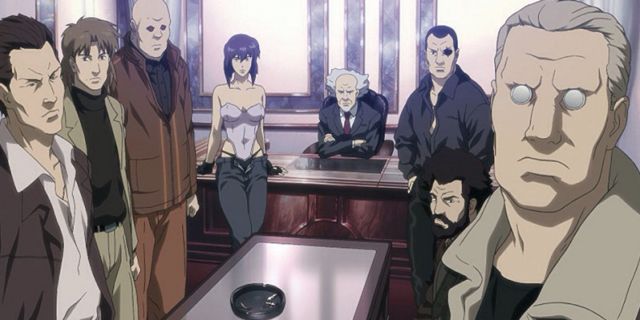
In cyberpunk fiction, the audience is typically very aware of who is or isn’t a cyborg just by looking at them. One arm might be metal, or their skin could be adorned with various mechanical protrusions, yet Ghost in the Shell goes to great lengths to show its characters looking almost entirely human save for the ports on their necks. It’s only after an intense fight that the metal becomes exposed, like when the Major loses an arm or a leg.
It’s a very small touch on paper, but it’s an integral part of how the series creates a cyberpunk future that seems so realistic. In doing this, the narrative also expands upon its central philosophy of the merging of man and machine and how indistinguishable they will become as humanity achieves a singularity. Said singularity is presented as the result of cyberization, but more esoterically, the ascension of humanity to the digital world.
Considering the internet was only made publicly available after 1993, its possibilities were so limitless and exciting, that the speculative works of the decade changed eternally. In the same vein, Ghost in the Shell has become famous for how it predicted how the internet and people’s interactions with it would look. Consequently, the impact of the net is visible in every facet of society, be it on a computer screen or not.
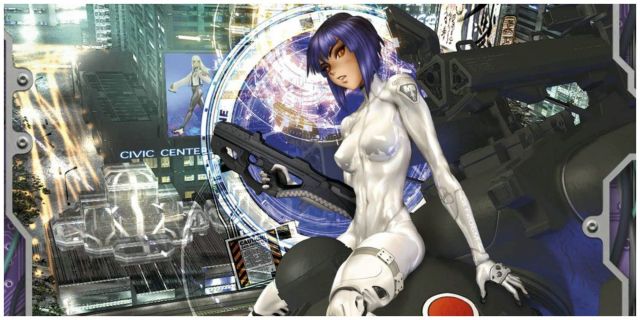
The 2002 TV series, Stand Alone Complex, is arguably the most realistic of the franchise, both in terms of presentation and its approach to the narrative. From the ways the story embodies the memetic nature of internet culture, to the manipulation of information, the franchise’s portrayal of the future feels more like the present with each passing year. As a work of art, it deepens further with retrospect, as the best sci-fi is one to do.
Apart from Yoko Kanno’s involvement in both, Bebop and GITS aren’t all that similar, so why compare them at all? For starters, both of them manage to connect with the audience on a deep level by understanding that the things that don’t change in the future can be just as meaningful as the things that do.
However, even in that respect, the ends to which these techniques are employed are wholly different and add to these stories’ charms. Ghost in the Shell uses science fiction to speculate about the future in the typical form of the genre, made classic through particularly masterful execution. On the flip side, Cowboy Bebop takes a more radical approach and keeps itself rooted firmly in the past, making a statement about its characters and life itself.
Cowboy Bebop is available to stream on Prime Video. Ghost in the Shell is available to stream on Prime Video.
